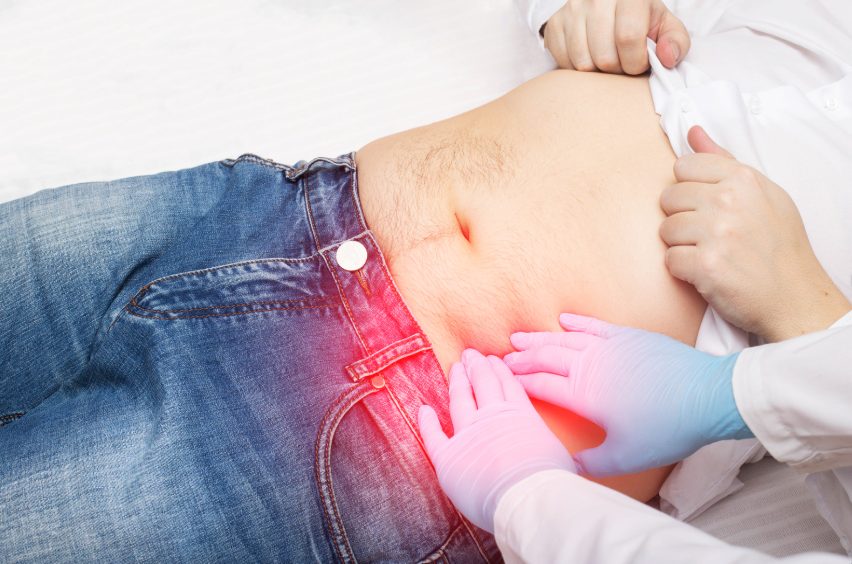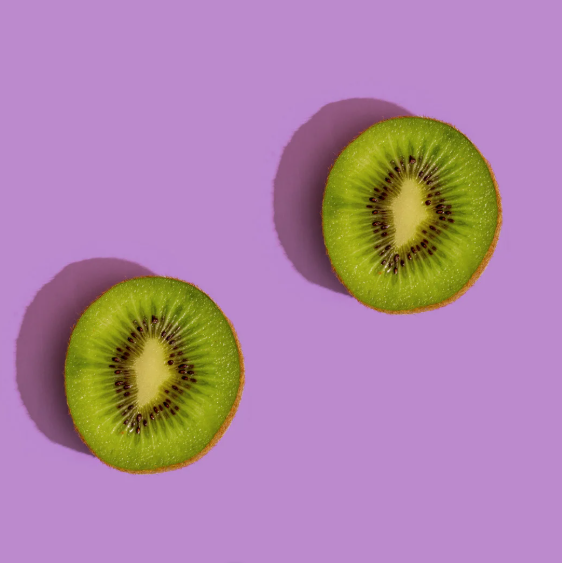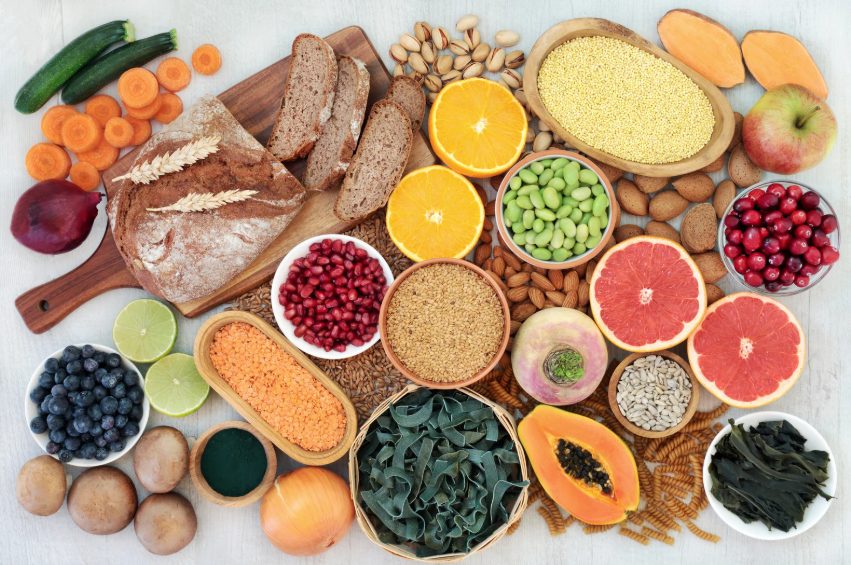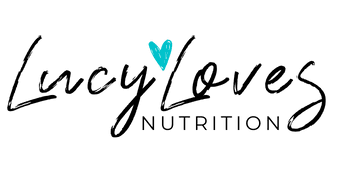What is Diverticular Disease and Diverticulitis?

Diverticular conditions are more common than you might think, especially as we age. Before we dive into the best diet for diverticular disease, it’s important to understand the distinction between these closely related conditions:
- Diverticulosis: Small pouches (diverticula) form in the lining of the colon. This is very common and often symptom-free.
- Diverticular disease: When diverticula cause symptoms like bloating, constipation, or abdominal pain – but there’s no active infection.
- Diverticulitis: When the diverticula become inflamed or infected, causing more severe pain, high temperature, bleeding/mucus and digestive upset. This is an acute flare that often requires medical treatment.
This blog post focuses on how to eat to manage diverticular disease and reduce the risk of diverticulitis flare-ups through diet and lifestyle strategies. Many people search for “diverticulitis diet” when they’re really looking for long-term dietary guidance – so we’ll cover that here too.
If you’re currently experiencing an active diverticulitis flare, speak to your healthcare provider. Dietary needs during a flare are different and may include a temporary low-fibre or liquid diet to rest the gut.
What Causes Diverticular Disease and Diverticulitis?
The exact causes aren’t fully understood, but research points to several contributing risk factors:
- Gut microbiome imbalances – Disrupted gut bacteria may play a role
- Low fibre intake – Diets low in fibre can contribute to constipation and straining, increasing pressure in the colon
- Chronic constipation – Straining puts extra pressure on the intestinal wall, encouraging diverticula to form
- Ageing – The risk increases over time, especially after age 40
- Obesity – Extra weight increases abdominal pressure
- Physical inactivity – A sedentary lifestyle can slow gut motility
- Smoking – Linked with a higher risk of complications
- Stress – Can alter gut motility and increase inflammation
- NSAIDs & aspirin – Regular use is associated with an increased risk of diverticulitis and diverticular bleeding
Recent research published in Gastroenterology (Peery AF et al., 2021) highlights that a diet low in fibre and high in processed foods can increase the risk of diverticulitis. The good news is that this is modifiable.
How Can Diet and Lifestyle Help Diverticular Disease?
1. Fibre: Friend, Not Foe
For years, people with diverticulitis were told to avoid fibre-rich foods for fear they might irritate the colon. However, we now know that a higher fibre diet is actually protective. Fibre helps soften stools, improve bowel regularity, and reduce pressure in the colon — all factors that may lower the risk of diverticula becoming inflamed.
A 2021 study in Gastroenterology found that individuals with the highest fibre intake had a 42% lower risk of developing diverticulitis compared to those with the lowest intake. The key is to introduce fibre very gradually and focus on soluble fibre sources such as oats, cooked vegetables, and flaxseeds, which are gentler on the gut.
2. Stay Hydrated & Keep Moving

Water helps fibre do its job. Aim for at least 1.5 to 2 litres of fluid per day, more if you’re increasing fibre.
Move your body daily – walking, Pilates, or swimming all encourage gut motility
Avoid delaying bowel movements to prevent hardening of stools
Include gut-friendly foods like kiwi, prunes and flaxseeds
3. Feed Your Gut Microbiome
Your gut is home to trillions of microbes that help regulate digestion and immunity. Disruptions in this microbial balance (known as dysbiosis) have been linked to diverticular disease. A diet rich in diverse, plant-based foods supports a healthy microbiome, which may reduce inflammation and risk of infection in the colon.
Research from The Journal of Clinical Gastroenterology (Tursi A et al., 2020) shows microbiome imbalances in people with diverticular disease – strengthening the case for nourishing our beneficial gut bacteria through food and lifestyle.
A diverticulitis diet that supports overall gut health should include:
✅ Foods to enjoy
- Fruits (e.g., apples, berries, kiwi, prunes)
- Vegetables (e.g., carrots, spinach, courgette, squash)
- Legumes (lentils, chickpeas, beans – introduce slowly)
- Wholegrains (oats, brown rice, quinoa)
- Flaxseeds and chia seeds (ground for easier digestion)
- Fermented foods (yoghurt, kefir, sauerkraut – if tolerated)
❌ Foods to limit or avoid (if they worsen symptoms)
- Highly processed foods (refined grains, fast food)
- Red and processed meats
- Fried or greasy foods
- Excess alcohol
- Excess sugar
- Foods that trigger individual symptoms (use a food diary to spot these)
4. Manage Stress for Gut Harmony
Stress is often overlooked but plays a huge role in gut health. Chronic stress can affect gut motility, alter the microbiome and trigger symptoms.
Simple daily practices like deep breathing, meditation, or gentle exercise can be invaluable as part of your diverticulitis diet and lifestyle approach.
5. Consider Supplements for Extra Support
Supplements can be very helpful to support gut health, bowel regularity, and microbiome balance – but it’s important to work with a qualified practitioner to ensure you’re using the right supplements at the right time.
Certain supplements may help by:
- Reducing inflammation
- Balancing the gut microbiome
- Soothing the digestive lining
- Easing constipation
- Supporting bowel regularity
Because every gut is different, a personalised nutrition approach ensures you get safe, effective support tailored to your needs – especially when recovering from diverticulitis or managing diverticular disease.
7. Track Your Trigger Foods
A food and symptom diary can be a powerful tool to help you identify any foods that may be contributing to bloating, discomfort or irregular bowel habits.
You can download my free Food & Symptom Diary template to get started.

A Note on Diverticulitis Flare-Ups
If you’re currently experiencing an active diverticulitis flare, your dietary needs will be different compared to when you’re managing diverticular disease between flares.
During a flare-up, the focus is on resting the gut and reducing irritation. Many people benefit from a low-fibre or liquid diet temporarily, under medical guidance, to allow inflammation to settle.
Once symptoms calm down and your flare resolves, you can gradually transition to a diet that supports diverticular disease – rich in fibre and gut-friendly foods to help prevent future flare-ups and support long-term gut health.
This is where a personalised nutrition therapy plan becomes invaluable. Working with a qualified nutritional therapist ensures you get tailored advice that meets you exactly where you are – whether you’re recovering from a flare, managing ongoing symptoms like constipation and bloating, or aiming to reduce the risk of future diverticulitis attacks.
Key Takeaways: Your Gut-Friendly Action Plan
- A diverticulitis diet rich in fibre and plant-based foods can help manage symptoms and reduce the risk of future flare-ups
- Stay hydrated and keep moving to support bowel regularity and ease diverticulitis-related constipation
- Manage stress daily to protect the gut-brain axis and reduce inflammation
- Track your foods and symptoms to personalise your plan
- Consider working with a nutritional therapist for tailored diet and supplement advice to support gut health and recovery
If you’d like personalised guidance on your diverticulitis diet and lifestyle plan, book a free discovery call with me today and start feeling confident in your gut health again.
This article is for informational purposes only and isn’t intended to replace medical advice. While nutritional approaches can significantly reduce symptoms for many, they’re not a replacement for medical care when needed. Always consult your GP or healthcare provider before making significant dietary changes, particularly if you have existing health conditions or take medications.
